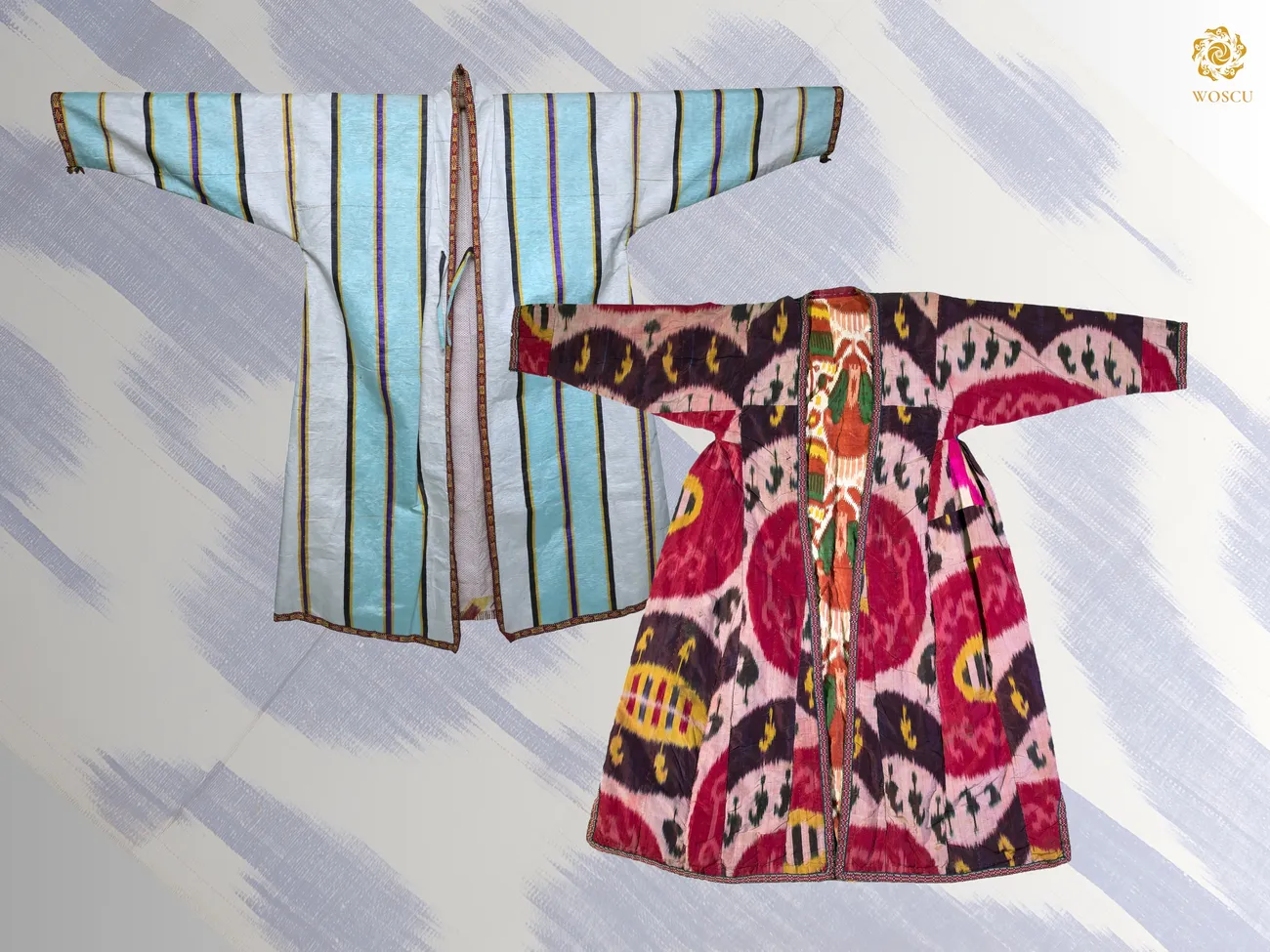
Both men’s and women’s clothing had a common basis – a wide, tunic-shaped shirt and outer coat. The style remained almost unchanged, only the fabrics changed, the methods of their decoration, the length and width of the clothes, and accessories.
Khalat-robes were particularly diverse. Before the early 20th century the robes remained wide, long, tailored from the whole pieces of fabric, hiding body shapes.
The back and front were cut from a single, straight piece of fabric folded in half. The front half was cut in the middle to the end, forming flaps. Straight lines cut from the transverse stripes of the sleeves were sewn to them on their sides without a cutout armhole. Gussets were inserted in the armpit area, often from a different colour of fabric. Small cuts were made at the bottom of the side seams of the dressing gown to increase the stride width. The collar was sewn, standing upright, without a fastener, coming to naught on the chest. The collar, flaps, hem and edges of the sleeves were sheathed in narrow woven braid or a strip of fabric.
You can learn more about the topic in the book-album "The Collection of the State Museum of the History of Uzbekistan" (Part 2, Volume XXVII) in the series "Сultural legacy of Uzbekistan in the world collections".
The general sponsor of the project is the oilfield services company Eriell-Group.
